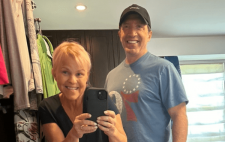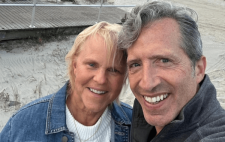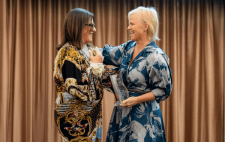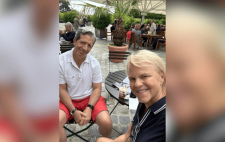A few months ago, I wrote about our office being on lockdown immediately after a shooting in the adjacent parking lot. A Virtua security expert emailed that column to the hospital’s PR department, “It doesn’t appear that Marianne Aleardi has had any emergency preparedness training.” That made me laugh, but he was right.
So he offered to help.
Paul Sarnese has been with Virtua for over 20 years and now runs their safety, security and emergency management department. He thought I could benefit from knowledge he has, so he took an hour out of his day to come here and share it with all of us at SJ Magazine. We didn’t ask him. We didn’t hire him. He simply did it to help us.
Much of what he told us came from research conducted by the FBI. They studied 160 cases of active shooters, and they found some trends that shed light on how to best protect yourself. Here’s what he told us about the findings:
An active shooter is not an impromptu event. The shooter has been planning this, buying supplies, mapping his route and fantasizing about walking through the building while he shoots. During that planning time, co-workers or friends may notice a change in personality or behaviors that seem abnormal. If you do, say something.
There’s an interesting percentage to remember, Paul told us: 60%.
In 60% of the incidents studied, the shooting lasted 3 to 5 minutes. Also in 60% of incidents, the shooting was over before police arrived. And again, in 60% of shootings, when the shooter realized the police were on the way, he took his own life. The shooters knew they would not survive this; 60% planned to kill themselves.
So Paul said the first thing you should do is run and get out of harm’s way. If you can’t, then hide. Create a barrier between yourself and the shooter, so lock the door and build a barricade behind it. In those 3 to 5 minutes, the shooter is trying to shoot as many people as he can. He won’t spend time trying to get through locked doors.
In the 2007 Virginia Tech shooting, Paul said, those who were injured were in unlocked rooms. He described how some students laid on their backs with the bottoms of their feet pressed up against the door. When the shooter tried to enter and felt the resistance, he moved on.
When you’re hiding, consider what you have that could be a weapon. Hot coffee could be a weapon or your keys or phone. Paul said to aim for the face, because the instinct when something hits your face is to close your eyes, and that can stop the shooting. If somehow you come face to face with a shooter, fighting back may be the only option you have to save your life.
Paul also stressed how important it is to call 911 as quickly as possible. Those 160 cases showed that when the shooter hears sirens or somehow discovers police are on the way, there’s a good chance the shooting will end.
You want to alert the police right away.
He also mentioned that New Jersey now has 911 texting capabilities. So if you aren’t able to speak on the phone, you can text for help. (We talked about Smart911.com, where you can fill out personal information for the police, like how many people live in your house and what cars are normally parked in your driveway. I completed the form right after our meeting.)
When I was first contacted about Paul coming out to train us, I thought, “Is that really necessary? What are the chances of that happening here?” Then I remembered it kind of did happen here. Isn’t it amazing that even after experiencing a lockdown, I questioned the importance of learning some safety measures?
During his talk, there was one sentence that Paul repeated often: “It can happen anywhere.” It just kept coming up. He wasn’t trying to shock us or even frighten us, he was trying to convince us how important it is to think about how you would save yourself if you were in danger. I’m glad we took the class. And I’m glad there are guys like Paul willing to help.
Click here to read Marianne Aleardi’s column about being on lockdown.














